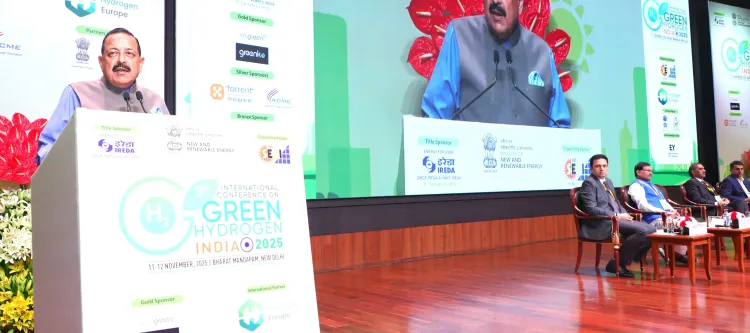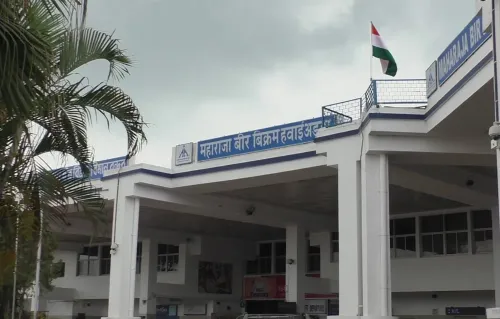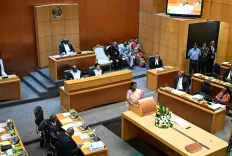Is India a Key Player in the Global Shift to a Self-Reliant Hydrogen Economy?

Synopsis
Key Takeaways
- India is committed to becoming a leader in the hydrogen economy.
- The transition to clean energy is an economic and strategic necessity.
- Collaboration among government, industry, and academia is key to innovation.
- Four Hydrogen Valleys are being developed to showcase hydrogen technologies.
- The RDI Scheme is a historic step for clean energy innovation.
New Delhi, Nov 12 (NationPress) India is emerging as a pivotal player in the global shift towards a self-sufficient hydrogen economy, stated Union Minister of State (Independent Charge) for Science and Technology, Dr. Jitendra Singh, on Wednesday.
While addressing the 3rd International Conference on Green Hydrogen (ICGH-2025), Dr. Singh emphasized that clean energy has transcended being merely an environmental choice and has become an economic, technological, and strategic necessity for the nation's progress.
He highlighted that India’s journey towards clean energy is being propelled by a collaborative approach that unites government, industry, and academia to develop sustainable solutions for the future.
“India will not just adopt clean technologies — we will innovate, lead, and inspire the world with our vision and determination,” he asserted, referring to the hydrogen economy as a crucial element of India’s energy security and industrial strength.
Focusing on significant initiatives, Dr. Jitendra Singh revealed that four Hydrogen Valleys are being established nationwide to illustrate the complete hydrogen value chain—from production and storage to transport and usage—with a total investment of Rs 485 crore. Out of this, Rs 169.89 crore has been earmarked under the National Green Hydrogen Mission (NGHM), while Rs 315.43 crore will come from industry and consortium partners.
These Hydrogen Valley Innovation Clusters (HVICs), conceptualized by the Department of Science and Technology (DST) and now incorporated under the Ministry of New and Renewable Energy’s (MNRE) NGHM, are set to showcase India’s first large-scale hydrogen demonstration projects, serving as live laboratories for innovation, standardization, and policy development, the Minister stated.
He also brought to light the recently initiated Research, Development and Innovation (RDI) Scheme by Prime Minister Narendra Modi on November 3, 2025, calling it a “historic advancement to connect discovery with deployment.”
With a corpus of Rs 1 lakh crore and a specific allocation of Rs 20,000 crore for the Department of Science and Technology, the scheme aims to bolster deep-tech and clean energy innovation while urging active participation from startups and industry.
Dr. Singh articulated that this initiative signifies a transition from government-led funding to a more collaborative and sustainable model that guarantees long-term scientific and economic resilience.
Furthermore, he emphasized the creation of the Anusandhan National Research Foundation (ANRF) as a significant reform aimed at integrating academia, industry, and government within one mission-driven framework. He noted that the Foundation will align India’s scientific capabilities with the national priorities in clean energy, advanced manufacturing, and sustainability.
In reference to the Mission for Advancement in High-Impact Areas – Electric Vehicle (MAHA–EV), Dr. Singh pointed out that the initiative embodies India’s Atmanirbhar Bharat ethos by fostering indigenous innovation in electric mobility and hydrogen fuel technologies.









